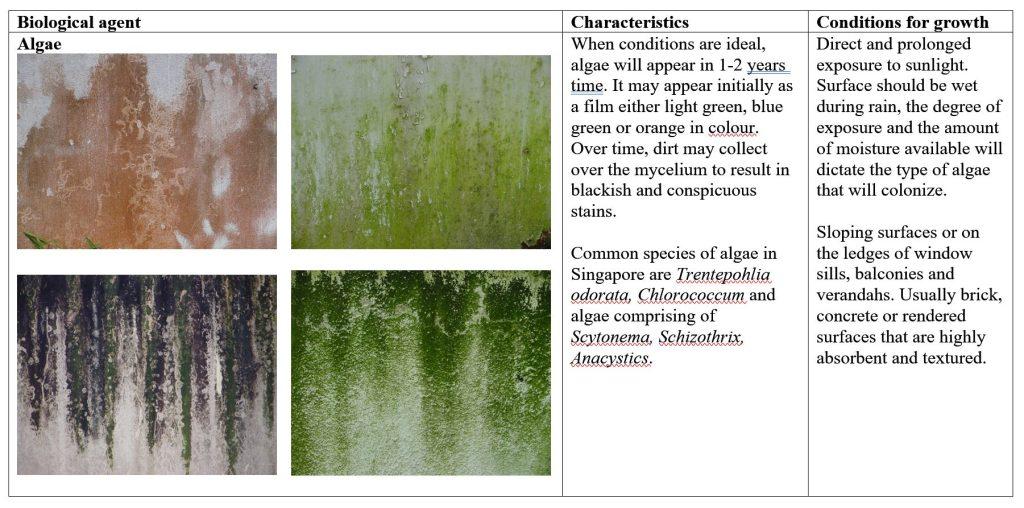Case 3
- Introduction
- Causes of Defects
- Good Practices
- Standards
- Maintenance and Diagnostics
- Remedial
- Similar Cases
- References
Cause of Defects
Algae thrive best where there is sun, moisture and nutrients. Dirt that is blown off the road and retained on façades becomes a source of nutrients. As such, algae are commonly found mainly outdoors on external façades. Common species of algae that may be found on façades are Trentepohlia odorata, Chlorococcum and algae comprising Scytonema, Schizothrix and Anacystics.

Algae growth has been characterised by two (a) factors attributed to the environment (b) factors attributed to the building envelope. Environmental factors consist of climate, thermal amplitude, precipitation, hygrometry (humidity), distance from the sea and presence/absence of vegetation. Precipitation and hygrometry directly affect the availability of water on to building facades, which is widely known as one of the key requirements for algae growth. In Singapore, the high humidity and precipitation result in buildings experiencing high amounts of water contact throughout the year. The closeness of the building to the sea can also result in higher atmospheric humidity, leading to a greater chance of algae growth. Building related factors affecting algae growth are high alkalinity (e.g. fresh concrete, high in alkaline helps algae to grow), excess surface moisture, windborne transport (orientation), and rain streaks that carry the algae spores down a façade.
Left unchecked, algae will grow on surfaces to create an aesthetically subjective discolouration with various shades of green, orange, black or blue. Besides being aesthetically unpleasant, biological growth on facades may also c